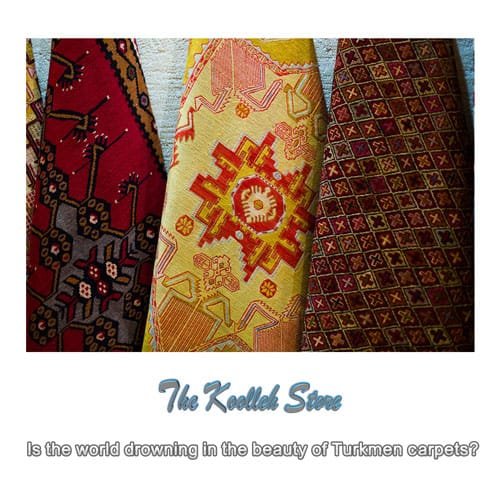Is the world drowning in the beauty of Turkmen carpets?

The oldest and most important Turkmen carpets left over from the nineteenth century show the taste and patience of the people of this region from the north of Gorgan plain, which is mixed with their blood and has been passed down from generation to generation.
Turkmen women artists produce carpets that are used in many aspects of human life; From carpets and rugs to plush and jajim, and from tassels, jalawal, khorjin, turbans, belts, and camel and camel reins, to needlework-embroidered garments.
Wherever the name of weaving and non-weaving is mentioned, the name, role, painting and various industries of Turkmenistan definitely shine, and with its color, pattern and smell, it has something to say, both inside and outside this country.
Undoubtedly, these simple abstract and geometric motifs full of mysteries derived from the customs, culture and way of life of this nomadic people are reminiscent of their past migration and migration. Dynamic and active women in this region, like other women of this region, in the struggle of these ups and downs of life and migration, using time and space and with the least facilities around them, have made great creations in the fields of art and crafts that we see today. We are and we are proud of ourselves.
Unfortunately, the multi-year economic recession in the carpet industry, like other industries that need government and non-government support, along with the existence of large competitors in our country’s neighborhood, has caused these original Iranian arts to be forgotten.
Golestan province needs more support with more than 60,000 weavers and producers in the field of carpets, who are often faced with low wages and resorting to false and daily jobs and other industries.
The Ministry of Cultural Heritage, Tourism and Handicrafts, as one of the custodians and guardians of the country’s heritage, can play a significant role in reviving these arts and crafts and directing tourism to the province by creating cultural centers and museums dedicated to indigenous and urban registration. And the villages that are important and exclusive centers of the local handicrafts of the same city and village should have a dome carpet like the national city.
Reaching the summit of the world in the field of Turkmen carpets requires the comprehensive support of various organizations. One of the measures that can facilitate the globalization of Turkmenistan’s national carpet city is the municipality’s use of carpet-appropriate elements and furniture in the city to showcase the work, activity and dynamism of these industries in that area or city and village.
Examples of these small but influential steps can be a beacon of hope in the hearts of artists as well as those interested in handicrafts, especially Turkmen carpets, and provide a boom in production and the economy of low-income families.






